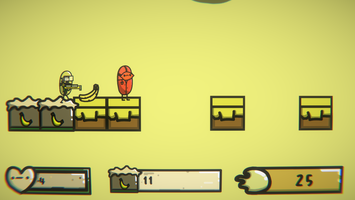

They seem to be grouped in smaller batches of updates. Notice something interesting about the FixedUpdate graph. In practice, this minor fluctuation in game-time vs. We over-counted this second, but we’ll under count in some later second to balance it out. However, the real world is a messy place, and instead Unity game-time is always catching up and overshooting the wall clock. If game-time and wall-time were perfectly matched, we would expect 50 FixedUpdates and 60 Updates. Over the course of a single wall-time second, 52 FixedUpdates and 62 Updates passed. At the bottom is one second of wall-clock time.
#Unity for mac low framrate update
The following graph shows FixedUpdate in blue, then Update in red. To start, let’s run Unity under a simple scene and the default settings. We’ll use the fantastic Squiggle asset to log graphs of each of our tests. These numbers also happen to be values Gaffer uses for the example at the end of the article! Coincidence? We can only imagine. As for the reasoning behind this choice, it seems that even the folks at Unity have long forgotten. This is generally 60 FPS, but is specialized depending on the platform and V-Sync rate.ĭepending on the circumstances, multiple FixedUpdates may run between two Updates (the game is render-blocked), or multiple Updates may run between two FixedUpdates (rendering is faster than the FixedUpdate step).īy default on desktop, Unity runs the FixedUpdate at 50 FPS and the Update at 60 FPS (the VSync rate). Unity attempts to run this Update pass at the given Application.targetFrameRate. It steps forward in a dynamic number of game-time seconds.

It generally correct to think of this pass as the “render update”, as it runs exactly once per frame render. The Update pass steps forward in leaps and bounds. Note that this does not guarantee FixedUpdate will be run every 0.02 wall-clock seconds! This is only the case when game-time and wall-time are in sync. If 0.02 seconds of game time has passed, it is guaranteed that the FixedUpdate has run during that period. The key here is that FixedUpdate is reliable.

You can change the fixed timestep amount by setting Time.fixedDeltaTime - even at runtime!, regardless of rendering or any other performance factors. The FixedUpdate pass steps forward in increments of 0.02 game-time seconds The default is 0.02 seconds. In Unity, this means that there are two main update passes: FixedUpdate and Update. Unity uses a two-part timestep, as described in the Gaffer article as “Free the physics”. Under heavy load (see below), game-time may slow down, and may not match one-to-one with wall-time. Game time: The amount of time that is perceived to pass within the game - Time.unscaledTime

Wall time: The amount of time passing in the real world on your wall clock - Time.realtimeSinceStartup In this article, we will need to talk about different types of time: So without further ado! The Unity Timestep Thus, this article attempts to collate the varying information on the Unity time step in one place and add objective testing to illuminate its behavior in the corner cases. The best articles are in the manuals, but they stop at a simple description and don’t go into any subtle detail. On top of that, there is surprisingly little information regarding the precise behavior of the Unity time step. Unfortunately, while this is useful, it is aimed at those writing their own engine, not using an existing one. The article gives a great amount of context for implementing a game engine time step in a couple of different ways. Cached version, as the article occasionally goes down. The preeminent article on game timesteps is Gaffer On Games: “Fix Your Timestep!”.


 0 kommentar(er)
0 kommentar(er)
